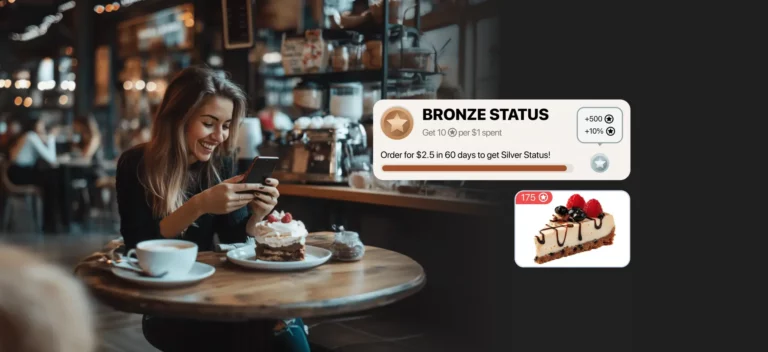Best restaurant apps to grow customer loyalty
Want to boost customer loyalty and maximize revenue? The right restaurant app—paired with a powerful loyalty program—can turn casual diners into lifelong fans. Discover the must-have features, AI-driven strategies, and gamification tactics that make top-performing apps a game-changer for restaurant success.


Every restaurant owner aims to grow their restaurant’s revenue, but not all achieve success. The reasons behind these ups and downs can vary, from managerial skills to external factors like location and global crises.
One thing is clear: for sustained growth, a restaurant needs more than just great food and a well-organized team. A dedicated restaurant app, combined with an effective loyalty program, is no longer optional—it’s essential. In this article, we’ll explore what makes a restaurant app a truly revenue-driving tool.
Recent research shows the rising importance of loyalty programs, with 51% of U.S. consumers using them in restaurants, up from 45% last year. Quick-service restaurants (QSRs) see the highest participation at 49%, while 34% of full-service restaurant (FSR) customers are also engaged. This trend highlights the growing value of loyalty programs for driving customer retention and growth.
Are branded apps and loyalty programs like body and heart?
Many restaurants, when selecting a company to create an app, believe that simply having a well-designed app is enough. However, this is a major misconception. What truly makes your app effective is your loyalty program, and what powers your loyalty program is the app itself.
With that in mind, we’ve identified the five key factors that make your app worth downloading.
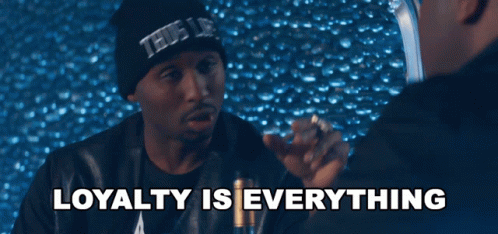
Criteria 1: Focus on UI/UX and usability
Having a sleek, stylish app is not enough. The primary focus of the product should always be on the customer experience. Ask yourself: on a scale of 1 to 10, how easy is it for a user to place a new order or reorder their favorite menu items?
Why is this important?
The user’s main goal is to place an order quickly and easily, without any interruptions. Unfortunately, many vendors focus more on adding features than on creating a user-friendly experience.
IT expertise and coding skills alone aren’t enough. A deep understanding of mobile app engagement strategies, user behavior, restaurant app KPIs, and more is critical to ensuring the success and profitability of both the app and your marketing initiatives.
When we download a new app, we’re eager to dive in and start using it. But often, the first thing we encounter is a sign-up screen. 🙄 This can be a major turn-off, as the friction of signing up can drastically reduce user enthusiasm. It’s a common mistake many companies make.
Example:
In the Papa Johns loyalty program, app, and website, we’ve designed a seamless onboarding and activation process without requiring registration upfront, ensuring that no potential guest is lost due to unnecessary complexity.
Additionally, LoyaltyPlant’s Smart landing pages eliminate the need to remember or manually enter promo codes. These landing pages automatically apply offers, further simplifying the user experience and making it effortless for guests to enjoy their bonuses. This frictionless process helps boost user engagement and ensures a smooth journey from start to finish.
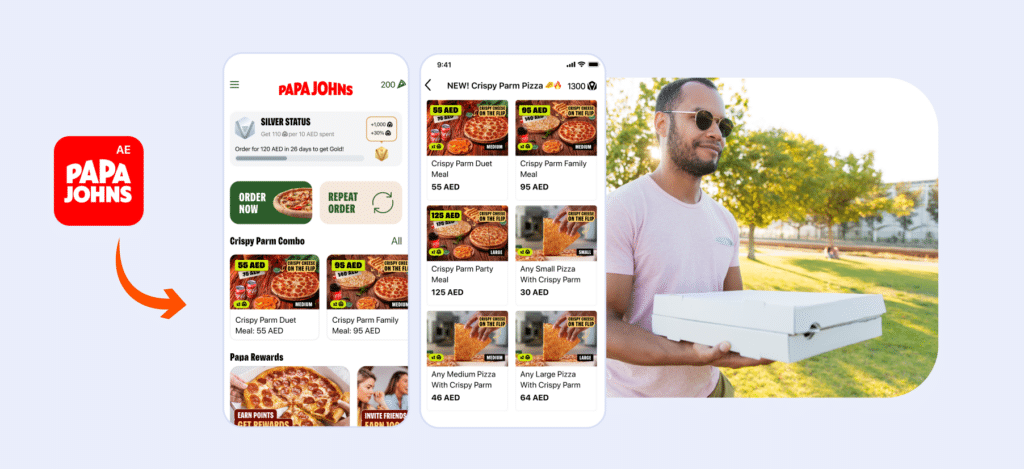
Criteria 2. Offer cost-effective gifts to enhance satisfaction
An effective rewards program should focus on reducing promotional costs associated with customer acquisition and retention, while minimizing reliance on discounts. By offering cost-effective gifts, guests can redeem their accumulated rewards for various purposes, such as low-cost menu items based on their loyalty status.
Why is this important?Over-reliance on discounts can erode profit margins and devalue the brand. A well-structured rewards program with low-cost items engages customers and encourages frequent redemptions without reducing the average check size. This strategy not only maintains profitability but also enhances customer satisfaction by adding a sense of joy to every purchase.
Example:LoyaltyPlant aims to boost customer loyalty and engagement without depending heavily on discounts, which could hurt profitability. So, we developed a cost-efficient rewards catalog that provides value to customers while maintaining revenue stability.
- Low-Cost Menu ItemsEasily redeemable items like potato wedges that complement main dishes, encouraging frequent redemptions.
- High-Cost RewardsPremium items reserved for higher-tier customers, incentivizing members to reach top-tier status.
- Charity DonationsPlatinum customers can donate points equivalent to one large pizza. Papa Johns matches this with three additional pizzas, providing meals for families in need.
ResultsDespite the availability of higher-cost rewards, most guests chose to redeem points for low-cost items, resulting in a stable (and sometimes increased) average check size. The new rewards strategy successfully increased customer engagement while supporting revenue growth—proving that a well-structured loyalty program can achieve both customer satisfaction and profitability.
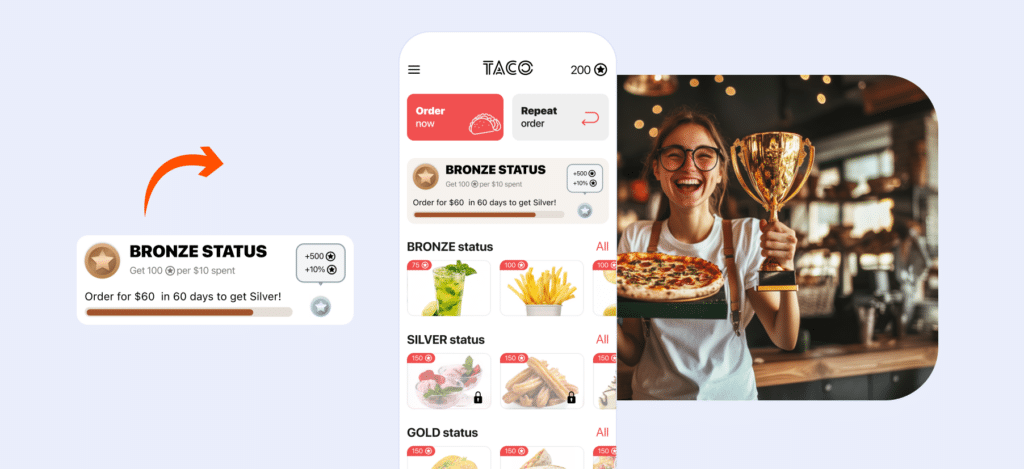
Criteria 3. Use AI to bring more revenue
Leveraging AI for personalized campaigns enables brands to create tailored messages based on individual customer preferences, order history, and frequency. By delivering targeted offers at the right moment, such as a favorite dish, AI helps motivate customers to place an order and stay engaged.
Why is this important?
Personalized marketing is far more effective than one-size-fits-all approaches. Generic offers can be overlooked, while tailored messages resonate more with customers, making them feel understood and valued. This leads to increased order frequency, improved customer retention, and overall revenue growth, proving that AI-driven personalization can drive meaningful business outcomes.
Example:
A key component of Papa Johns’ loyalty strategy is the use of AI-powered personalized campaigns that target customers based on their behavior, preferences, and order frequency. These campaigns aim to deliver the right offer at the right time—whether it’s a free pizza or a special menu item—encouraging customers to place an order within a limited time frame.
The database of Papa Johns guests was segmented into two main categories:
- Active Customer Cohorts
- Heavy Users: 3+ orders per month
- Medium Users: 2 orders per month
- Light Users: 1 order per month
- Lapsed Customer Cohorts
- Lightly Lapsed: No orders for 1-2 months
- Medium Lapsed: No orders for 2-4 months
- Super Lapsed: No orders for 4-12 months
For example, if a “super lapsed” customer previously showed a preference for Pepperoni pizza, the AI algorithm would send a personalized push notification, such as: “Craving Pepperoni? Get a free slice with your next order!” This targeted message would encourage the customer to return and place an order, reactivating them as an active guest.
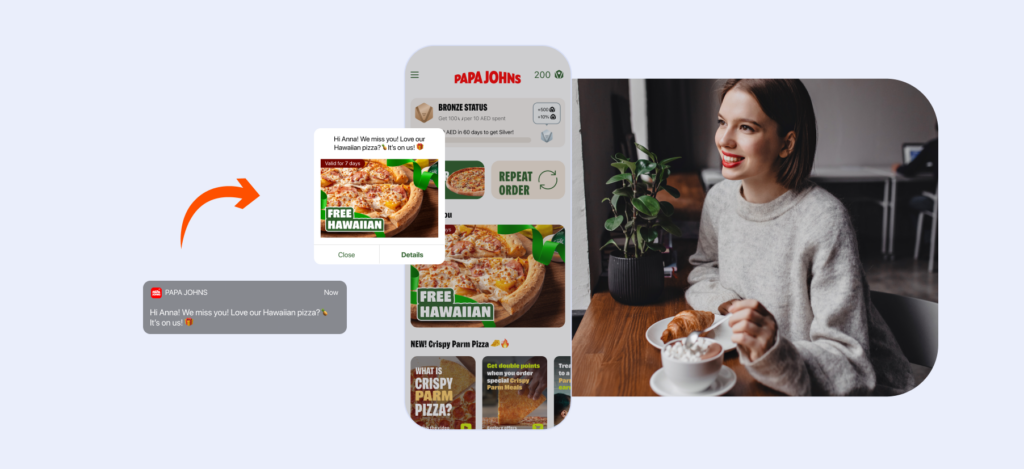
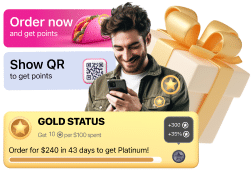 Download the guide now!
Download the guide now! Criteria 4. Gamify experience to grow engagement
A successful tiered loyalty program should be dynamic and easy to understand, featuring elements like expiring tiers, a visible progress bar, and automated messages about upcoming status changes. These features keep customers informed and motivated to maintain or elevate their tier status.
Why is this important?If a loyalty program is too complicated or static, it can fail to engage customers, especially younger generations who value instant feedback and excitement. By making the loyalty journey visually appealing and straightforward, customers can easily track their progress and feel a sense of accomplishment. This approach not only boosts visit frequency but also enhances the overall user experience and strengthens brand loyalty.
Example:
LoyaltyPlant introduced a tiered loyalty program, tailored to enhance customer engagement and revenue growth. The program is structured around four distinct levels, each offering progressively better rewards and motivating customers to move up the tiers.
The tiered structure is visually integrated into the app’s main screen, providing customers with clear goals to reach the next level. Each tier has specific criteria and can be customized to match a brand’s unique features. For example, for Papa Johns UAE, we designed the following four statuses:
- Bronze StatusAutomatically granted upon downloading the app, offering basic rewards for new users.
- Silver StatusUnlocks additional benefits like birthday gifts for customers who meet the spending threshold.
- Gold StatusIncludes higher point accumulation and access to exclusive merchandise.
- Platinum StatusPlatinum Status Provides VIP perks such as invitations to special events and the option to donate points to charity.
ResultsThis dynamic tiered system not only boosts customer engagement but also encourages increased spending as customers strive to reach higher levels. With the visual progress bar and gamified tier upgrade animations, users interact more frequently. As a result, the program significantly increased average check sizes and customer lifetime value, making it a key contributor to revenue growth.

Criteria 5: Enable seamless integration with delivery platforms
A powerful restaurant app should seamlessly integrate with third-party delivery platforms or offer in-house delivery options to provide a smooth ordering experience.
Why is this important?A lack of integration can lead to fragmented customer experiences, frustration, and missed revenue opportunities. An app that allows customers to place orders, track deliveries, and redeem loyalty rewards in one place provides a cohesive experience and boosts satisfaction.
Example:
At LoyaltyPlant, we offer integrations with major POS systems like Syrve, ensuring that the entire ordering process is fully automated. All online orders are sent directly to the kitchen, and loyalty points are automatically accumulated and subtracted—both for online and in-store orders (via QR-code scanning). Menu items, stop-lists, and order statuses are synced in real-time with the POS system, minimizing manual errors and reducing fraud risk.
With our solution, rewards are only redeemed after validation, and extended targeting options, such as purchase history targeting, are available thanks to the deeper data integration. All sales, stock inventory, and other operational data are automatically accounted for, creating a seamless experience for both customers and staff.
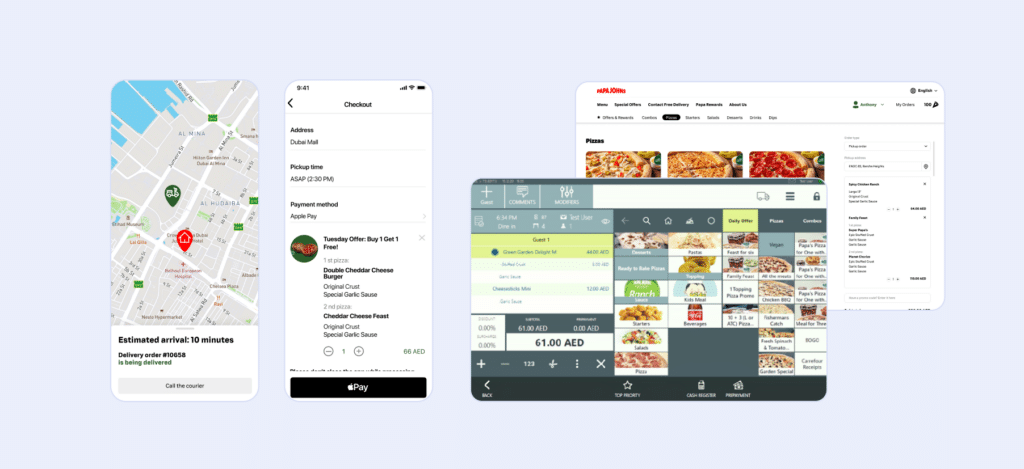
Final thoughts
Building a successful restaurant app that drives customer loyalty and revenue growth requires careful planning and implementation of the right features.
Whether it’s focusing on seamless UI/UX, gamifying the experience, or leveraging AI for personalized offers, each criterion plays a critical role in shaping a rewarding customer experience. By incorporating these elements, you can turn a basic app into a powerful marketing tool that transforms casual customers into lifelong brand advocates.
Curious to see if your app and loyalty program are delivering the results you want?
Take the first step towards optimizing your customer engagement strategy
with a free analysis of your app and loyalty program. If you don’t have an app yet, our team can help you explore the benefits of developing one tailored to your needs.
For existing app users, we’ll identify opportunities to enhance your app’s performance, helping you unlock more sales and elevate customer satisfaction. Fill out the form now to get your free analysis from top experts and discover the untapped potential of your restaurant’s digital presence.







